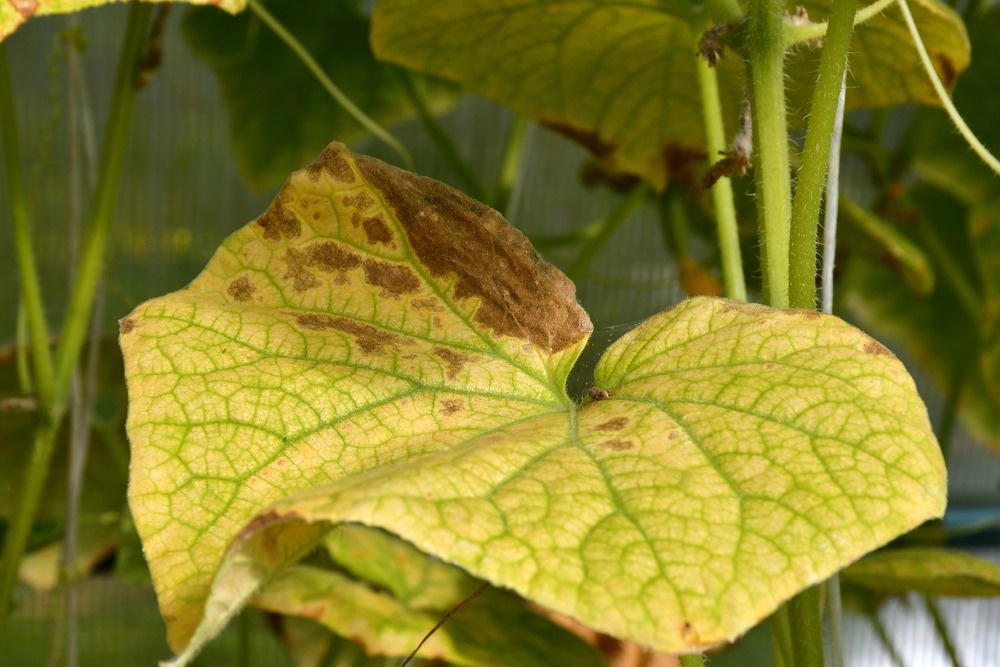A recent study accepted for publication in the journal Materials Today: Proceedings presents an overview of the advantages of applying nanotechnology to plant viral disease management as well as the detrimental impacts of nanotechnology on the ecosystem.

Study: Role of nanotechnology in management of plant viral diseases. Image Credit: OlgaSolo/Shutterstock.com
Plant viral diseases create massive economic damages and endanger the sustainability of agriculture. Nanotechnology is an emerging agronomy technique for plant viral disease control as nanoparticles can be utilized in pest control systems as nano insecticides, medicine delivery agents, or transporters for existing pesticides.
Nanoparticles can also enhance plant disease tolerance by triggering plant defense systems. However, the long-term and detrimental consequences of nanoparticle exposure on plants, soil microorganisms, humans, and the environment have prompted various concerns, restricting the practical uses of nanotechnology in agriculture.
Plant Viral Diseases: Why are They Dangerous?
Several acute plant diseases are caused by plant viruses. These diseases are challenging to control and, in some circumstances, incurable. Viruses are responsible for an estimated 50% of plant illnesses and 20% of overall yield reduction. Plant viral diseases are also at fault for widespread crop damage, posing a threat to global food security.
Plant viral disease control is required to meet the growing human population's demand for plant-based foods. Plant viral diseases spread from contaminated to normal plants by vegetative reproduction and biotic carriers such as nematodes, fungus, and insects.
Traditional Plant Viral Disease Management Methods
Plant viral infections are traditionally treated with antiviral medications such as benzamide, tylophorine B, and riboside. Chemotherapy may prevent the formation of new viral particles, but it is ineffective against initially formed viral proteins.
Techniques such as next-generation sequencing (NGS) may also be used to monitor, characterize, and diagnose viral illnesses. However, owing to the increased rate of mutation, the practical uses of these approaches are severely limited.
Effective and novel techniques are therefore necessary to regulate harmful biotic pathogens and limit viral infection propagation in plants.
Plant Viral Disease Management Using Nanotechnology
Nanotechnology provides a novel platform for producing antipathogenic chemicals by transforming metallic, non-metallic, and bio substances into their nanoforms. These nanoparticles may subsequently be employed to transport drugs, diagnose, and treat a variety of plant viral diseases.
Nanotechnology offers nanoparticles of various shapes and sizes (1-100 nm) with a high surface-to-volume ratio and unique physical and chemical characteristics that hinder the development of infectious pathogens.
Physical, biological (green synthesis), and chemical processes can be used to create nanomaterials. Biological techniques are preferred because of their environmentally favorable and cost-effective approach. Additionally, chemical and physical procedures are costly and emit certain toxic substances into the environment, limiting their widespread utilization.
Nanoparticles can lessen the symptoms of plant viral diseases by preventing viral entrance into host cells, reducing viral DNA replication, and triggering plant defense systems against various viruses.
Nanoparticles enter the plant via stomatal holes and pass through the plasma membrane to the plant cells. They are quickly absorbed and transferred across plant leaves, activating the plant defense system and reducing the severity of the plant virus diseases.
Adverse Effects of Nanoparticles on Plants
Constant exposure to nanomaterials can have catastrophic consequences for the ecosystem. Nanoparticles can harm plant development at several phases, including seed germination, plant viability, root development, photosynthesis, and seedling growth.
The accumulation of nanoparticles in the soil can alter the soil's microbiota, influencing the plant's germination rate, maturity, and reproduction process.
Silver and zinc oxide nanoparticles, for example, impact the composition of nitrogen fixers, phosphate solubilizers, actinobacteria, proteobacteria, and biofilm formers in soil. These are crucial plant growth-promoting bacteria, and a reduced concentration in the soil harms plant development.
Conclusion and Future Perspective
Plant viral diseases have become a major challenge for guaranteeing global food security. As a result, extensive study has been conducted to understand the causes and treatment of these plant viral infections.
Nanotechnology is considered an effective technique for reducing virus-related diseases in plants. However, dependable and safe approaches must be developed before adopting nanoparticles in plant viral disease control.
Therefore, future studies should concentrate on the potential agricultural uses of nanoparticles while limiting their negative impacts on the environment and human health.
Reference
Rajani. et al. (2022). Role of nanotechnology in management of plant viral diseases. Materials Today: Proceedings. Available at: https://doi.org/10.1016/j.matpr.2022.06.355
Disclaimer: The views expressed here are those of the author expressed in their private capacity and do not necessarily represent the views of AZoM.com Limited T/A AZoNetwork the owner and operator of this website. This disclaimer forms part of the Terms and conditions of use of this website.